Creative Connecting: Are You Unintentionally Lying to Your Customers?
Duvall O’Steen and Jen Cullen Williams share expert advice on how to avoid misleading consumers when it comes to more nuanced topics.

We all know educational and informational dialogue with our customers is key to closing a sale. But how do you make sure empowered and well-meaning people in your jewelry store or business are not misspeaking or accidentally misrepresenting the truth?
We are all about “creative connecting” here, but to make sure you are not getting overly creative with your external communications, in person or online, we decided to talk to some experts to ask for tips on avoiding unintentionally lying to your customers.
Below are some specific ways to prevent miscommunication, as well as keen advice for handling current challenging topics like sustainability and lab-grown diamonds.
Transparency—Be Specific
One way to sidestep the challenge of generalization and to tell more truth is to get specific.
Transparency in any industry can be a useful tool in helping your customers to make informed and intelligent purchase decisions.
According to Christina Malle, owner of Christina Malle Designs and a former human rights attorney who sits on the board of directors of Ethical Metalsmiths, “Our industry is so opaque that steps towards transparency can seem downright radical.
“Transparency and its tougher cousin—accountability—are feasible goals, though. Pippa Small, a jeweler based in London, had a memorable quote in British Vogue: ‘If you overclaim, you pull everyone down.’”
Making generic statements about things like sustainability is often considered greenwashing. It means nothing to suggest your jewelry is sustainable without specific information to prove the claim.
As Malle puts it, “It is important to share the actual information backing up your claim. As an example, Prada recently launched a fine jewelry line and included the name of the refiner sourcing its gold.
“That seems like another step towards transparency, one which can be useful to consumers and observers. We can research that refiner’s site and find out if it meets our own standards for ‘responsible’ sourcing.”
Sara Yood, deputy general counsel at the Jewelers Vigilance Committee, explains why there is such confusion in the marketplace about terms like “sustainability.”
“The FTC’s ‘Green Guides’ cover environmental marketing claims. But guess what—the FTC doesn’t actually define sustainability in these guides, leaving the term a free-for-all for anyone to use indiscriminately. In order to make good, valuable claims about sustainability efforts, I recommend being quite specific about those claims.”
Yood suggests asking questions such as, “Are you using Fairmined gold or post-consumer recycled diamonds?” or “Are you combating the problem of too much packaging when shipping your products by eliminating plastic?”
“All of that can be information valuable to a consumer, but we also know consumers place a lot of expectations onto general environmental benefit claims. It’s easy to fall into the greenwashing trap, where your perceived environmental benefits are actually outweighed by other practices, which are not environmentally friendly. Being specific about these claims can save you from the vague perception of environmental benefit without any backup,” she said.
Kyle Roderick, journalist, influencer behind the @bijouxreview on Instagram, and author of “Bejeweled: The World of Ethical Jewelry,” agrees.
“When brands claim ‘sustainability’ on their website with no further information to back up such claims, it is essentially virtue signaling. The lack of concrete examples comes across as misleading at best and greenwashing at worst. As an example, consumers know and understand what USDA Organic certification is in the food industry. I believe they would like to see something like that in the jewelry world as well.”
For brands, this means giving information to the retailers and selling associates that can be shared with the customer at point-of-sale. For example, it is no longer sufficient to simply say that gold is recycled; you must share how you know your gold is all recycled.
According to Alisa Bunger, vice president of U.S. sales and operations for Chic Pistachio, parent company of Aurelie Gi and Ania Haie brands, “There’s a great deal of misinformation regarding sustainability, recycled, even ‘lab-grown’ goods, which makes it more difficult for the consumer when making a purchase. We decided in 2021 to change all the metal we use to recycled. Our products have been tested by the GCAL lab in New York, and the factory that does all our production is certified by the Responsible Jewellery Council.
“We take these steps to add that layer of confidence to back up what we say. We made the same decision to make our packaging out of recycled cardboard. Although we can’t change every component of our brand, we want to do our part to protect our planet and the environment. Not all manufacturers who make ‘recycled’ or ‘sustainable’ claims are able to back it up. That’s why it was important for us to have the RJC Certification to demonstrate our commitment.”
Roderick further suggests that jewelry brands and retailers who want to achieve credibility and sustainability credentials should work with established third-party standard certification organizations outside of the jewelry industry, such as SCS Global.
She noted, “Their operations and sourcing will undergo a scientific lifecycle assessment, which will reveal and prove what they have done to improve their ESG (environmental, social, and governance) performance and thus earn a sustainability rating.
“Changing environmental impact, however, could mean investing in different types of practices to become certifiably sustainable, which could lower profits. But this is what environmentally conscious consumers today are demanding. If you claim sustainability, prove it. How does your company source stones? Save energy? Repurpose materials? And contribute to the community?”
Specificity leads to transparency, which leads to greater credibility. Such detailed information must be requested of suppliers (prior to purchase) and also shared with consumers.
Malle noted this is one important step, though not the only one.
“Transparency alone is not a complete answer to every problem, but it is a giant step forward. As wise people have observed, we cannot improve what we cannot measure.”
Clear Communication—Choose Your Words Wisely
As with many things in the fine jewelry industry (treatment of gemstones, warranties, promotional language, etc.), clarity is also key. It is important to be well informed and to choose words wisely to avoid greenwashing, overpromising, or misleading your customers.
Wade Abel, CG, director of gemology at the American Gem Society, notes that words are important when disclosing heat-treated gemstones, just as nomenclature is critical for labeling or discussing lab-grown diamonds.
(For more on disclosures, see our previous Creative Connecting column, How to Handle Disclosures.)
First and foremost, be sure to follow the law.
According to Abel, “The Federal Trade Commission requires that treatments in gemstones are disclosed. Although most colored gemstones can be treated in some way, this should not be taken for granted. The salesperson needs to disclose this information to the customer so they understand.
“When discussing diamonds, treatment disclosure is also required, as well as information about the permanence of any treatment, as not all are permanent. This includes any special care instructions needed to protect the gemstone.”
The JVC’s Yood cautions jewelers about language when discussing lab-grown diamonds, particularly in advertising.
“Under the FTC Jewelry Guides, when advertisers use the word ‘diamond’ without a disclosure, it means a natural diamond that comes from the earth. Advertisers must use one of the terms ‘laboratory-grown,’ ‘laboratory-created,’ ‘[manufacturer name]-created,’ or some other phrase of like meaning to disclose that a diamond is not a natural stone. And all disclosures need to be conspicuous, upfront, and [given] before a customer decides to purchase a product.”
“If you are unsure that diamonds in a piece of jewelry are not indeed natural,” said Abel, “there are steps to take to ensure proper disclosure such as using diamond screening equipment to screen inventory before a sale or asking for a written statement that your suppliers will not knowingly include laboratory-grown diamonds in the product unless disclosed.”
The important thing is to know for sure and to communicate the facts to the end consumer.
It is equally important not to call lab-grown diamonds “faux” or “fake” or “synthetic.”
According to Abel, “There are specific guidelines outlined by the FTC that address this. (FTC Guideline 23.12) The FTC has also determined that laboratory-grown diamonds are considered diamonds, therefore calling them fake or faux is not appropriate. The term ‘synthetic’ is not recommended because of the potential for confusing it with the term ‘simulant.’ A diamond simulant could be cubic zirconia, moissanite, or glass, a completely different material used as an imitation or substitute.”
“I would also caution anyone who encounters the ‘S’ word—sustainable—regarding jewelry to ask: sustainable for whom?” — Christina Malle, Christina Malle Designs
When it comes to responsible language for environmental claims, many advocates for responsibility in the jewelry industry use the Jewelry Glossary Project for guidance, Malle said.
“I would also caution anyone who encounters the ‘S’ word—sustainable—regarding jewelry to ask: sustainable for whom? For a retail brand? For a mining community seeking to protect its natural resources for future generations? For the Earth?
“Which definition of ‘recycled’ is your retailer, brand or refiner using? Is it a definition that is in sync with a commonly understood definition of post-consumer use? Or is it a definition that most refiners use, which is diluted and confusing? Gold from a Swiss refiner may have been smuggled out of another country and sat as bullion in Switzerland for a few weeks; it then meets the ‘recycled’ definition for many refiners, but is that meaningful? Or is it confusing or even … disingenuous?”
Malle continued, “Another controversy swirls around the environmental impact of laboratory-grown diamonds. What is the environmental impact of fabricating a diamond? If a company is not sharing that impact, how can the company claim that it is better than mining? Are carbon offsets enough to support a claim of sustainability or responsibility? What if the company headquarters are in the [United] States, but the fabrication occurs overseas? What are the environmental oversights? These questions and related topics are among the issues that members of Ethical Metalsmiths wrangle with on a regular basis.”
Another jewelry label warranting caution is “conflict-free.”
Sales associates and brands must be careful when using this catchphrase but also find ways to focus on the positive steps our industry is taking.
John Pollard, International Gemological Institute senior director of education, noted: “Conflict-free marketing associated with laboratory-grown diamonds is raising consumer questions about natural diamonds. Many jewelers talk about the Kimberley Process, without realizing that it doesn’t apply to all diamonds.
“[In addition] it’s imperative for us to acknowledge that conflict minerals are an ongoing issue in our world. Those minerals include gold, tin, tungsten and coltan, a component of every mobile device. It’s also important to reframe the conversation by describing all of the work the diamond industry has done since 2003 to ensure natural diamond revenues sustain indigenous people in some of the world’s most remote locations, and to rehabilitate/preserve mining environments.”
Lastly, he shared a word of caution about discussing diamonds and jewelry as good investments.
Pollard said, “Generally speaking, consumers should not consider diamonds as investment vehicles. This is especially true for laboratory-grown diamonds since they are more likely to decrease than increase in future value.
“There is also a bit of an illusion about natural diamond value. Consumers are often shocked to find they can only recover about a third of what they originally paid on the secondary market. Some sellers offer trade-in programs that allow better value recovery, but we should not imply a diamond shopper can buy a diamond for $10,000 and go sell it down the street for the same amount. Diamonds bought for adornment are best valued by consumers for their symbolism and beauty.”
Education—Stay Informed
Another important aspect of proper communication with customers is education. Definitions and legal restrictions can evolve over time. It is important for buyers and sales associates to keep up to date on the latest terminology.
According to Abel at AGS, “The industry, terminology, and gemstone treatments are constantly evolving. It is so important to keep up to date and obtain ongoing education for you and the team members in your business. In any profession or professional in their field, learning needs to be a continuous process.”
AGS recommends using talking points provided by trade associations. If you are a member of any trade organization, contact them to ask what resources they can provide.
Also, instill the value of continuing education in everyone at your company. Many industry organizations offer classes to help you and your team stay on top of the latest facts, terminology, and legal restrictions.
Abel also recommends attending webinars, listening to podcasts, reading trade publications (like National Jeweler) and visiting educational conferences—not only the senior members of the business, but anyone in the company who liaises or speaks regularly with customers.
“Conscious consumers research what you tell them, so it’s important for you, as jewelry professionals, to educate yourself with the facts beyond marketing copy, hearsay, and old recitations.” — John Pollard, IGI
Role play is another convenient tool to help monitor your staff’s language. Challenge your staff with difficult scenarios related to the hot-button topics of the moment, whether it be lab-grown diamonds, sustainability, or conflict-free claims.
According to Abel, “Information and a little education go a long way towards reinforcing that the jeweler is trustworthy, which is paramount in this industry.”
The good news is we are talking about these difficult topics and the language we all need to use to make things clear to our customers.
As Malle put it, “It’s wonderful when an industry takes stock of itself and luckily, this is happening right now for us. The Federal Trade Commission is now accepting input on its Green Guides, which cover many of these topics.”
Interested parties may want to weigh in and share their thoughts with the FTC or with organizations like Jewelers of America and JVC that are sure to share such information with the FTC.
As we continue to improve with specificity, clarity of language, and education, let’s all remember the old adage, one rotten apple spoils the whole barrel.
Always keep in mind that you are not just speaking for yourself or your product. The reputation and esteem of our entire fine jewelry industry are at stake.
As IGI Pollard put it, “Concealing facts, or ‘whitewashing’ products is damaging to the entire industry, whether it’s intentional or accidental. Conscious consumers research what you tell them, so it’s important for you, as jewelry professionals, to educate yourself with the facts beyond marketing copy, hearsay, and old recitations.”
The Latest

The trade show is slated for Jan. 31-Feb. 2 at The Lighthouse in New York City's Chelsea neighborhood.

January’s birthstone comes in a rainbow of colors, from the traditional red to orange, purple, and green.

The annual report highlights how it supported communities in areas where natural diamonds are mined, crafted, and sold.

How Jewelers of America’s 20 Under 40 are leading to ensure a brighter future for the jewelry industry.
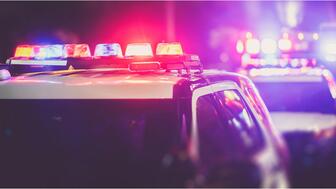
Footage of a fight breaking out in the NYC Diamond District was viewed millions of times on Instagram and Facebook.

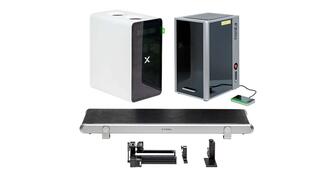
The supplier has a curated list of must-have tools for jewelers doing in-house custom work this year.
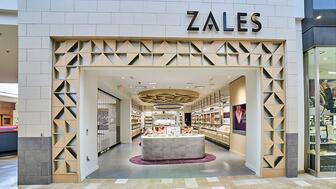
The Signet Jewelers-owned store, which turned 100 last year, calls its new concept stores “The Edit.”
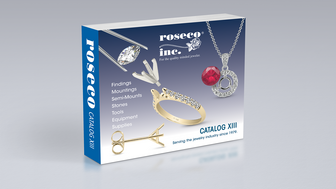
Roseco’s 704-page catalog showcases new lab-grown diamonds, findings, tools & more—available in print or interactive digital editions.

Linda Coutu is rejoining the precious metals provider as its director of sales.
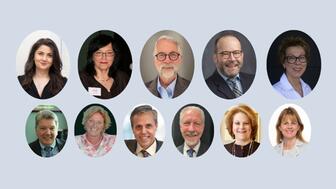
The governing board welcomed two new members, Claire Scragg and Susan Eisen.

Sparkle with festive diamond jewelry as we celebrate the beginning of 2026.
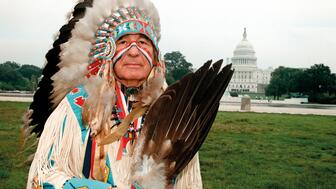
The master jeweler, Olympian, former senator, and Korean War veteran founded the brand Nighthorse Jewelry.

In its annual report, Pinterest noted an increase in searches for brooches, heirloom jewelry, and ‘80s luxury.

Executive Chairman Richard Baker will take over the role as rumors swirl that a bankruptcy filing is imminent for the troubled retailer.
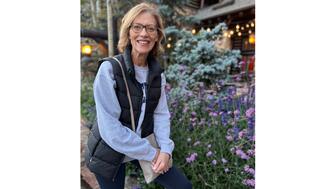
Mohr had just retired in June after more than two decades as Couture’s retailer liaison.
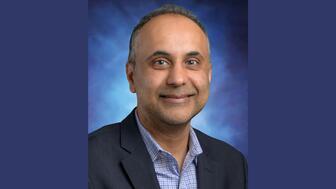
Shekhar Shah of Real Gems Inc. will serve as president of the Indian Diamond & Colorstone Association in 2026.
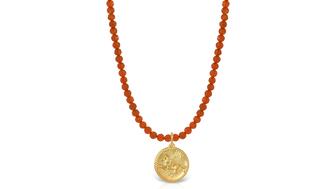
This year’s good luck charm features the mythical horse Pegasus, and is our first Piece of the Week of the new year.

Articles about crime, engagement rings, and a necklace worn in the World Series generated the most interest among readers.

As part of the leadership transition, Sherry Smith will take on the role of vice president of coaching strategy and development.

It marks the third time the country has headed the Kimberley Process. Ghana will serve as vice chair.

The new Bulova x Stetson designs highlight two animals often associated with the American West—the bison and the Texas Longhorn.
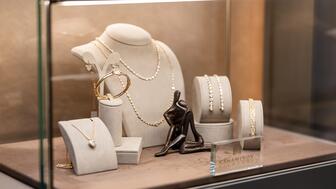
Its residency at Yamron Jewelers will run through May 2026.

From influential executives to innovative designers, we pay tribute to the people we said goodbye to this year.

The retailer is expanding into areas with large Indian and South Asian populations.
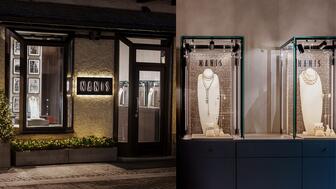
The Italian brand has opened its first flagship amid the peaks of the Dolomites in Madonna di Campiglio, Italy.
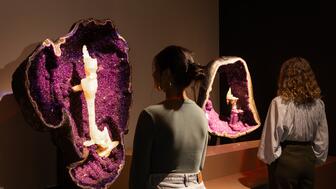
The new curation at the Natural History Museum of Los Angeles County showcases rare gem and mineral specimens in their uncut, natural state.
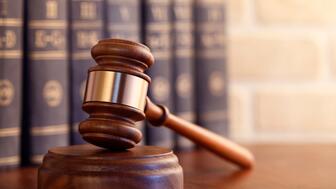
The couple pleaded guilty to concealing at least $127 million in cash transactions at its precious metals businesses.






























